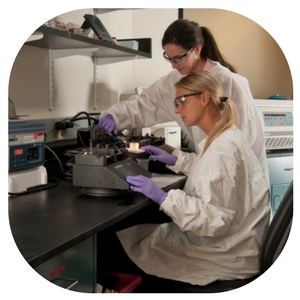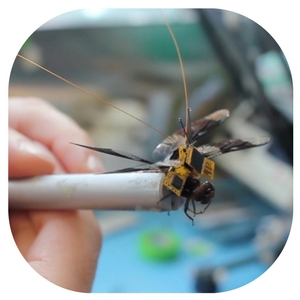New Cyborg Technology Develops a DragonflEye Miniature Drone

Although a cyborg drone still seems like a flight of fantasy, the research company Draper and the Howard Hughes Medical Institute (HHMI) at Janelia Farm have stepped into the future of autonomous flight with an exciting new technology. Saddled with a tiny backpack, dragonflies are the carriers of the technology in HHMI and Draper’s DragonflEye project. Preparing to produce dragonfly cyborg drones that are fitted with miniature control devices for human navigation, Draper’s “backpacks” contain an array of sensors and solar panels. These controls make the flight of the dragonfly an extension of the human who steers the insect.

Miniature drones have a huge variety of uses in the world of military intelligence, rescue missions and even pollination to protect the growth of world food stores. Draper’s DragonflEye project moves away from controlling insects using electrical impulses that interfere with the insects’ natural flight processes and toward autonomous flight that is directed through subtle optical stimulation. Smaller and lighter versions of the original design that included electrodes that were hardwired into the insect’s muscle and nervous systems, make Draper’s new technology an impressive sight.
Originally using larger insects like locusts and beetles, studies showed that these insects were capable of carrying weight of up to 1.3 grams during flight. The original technology did not include navigation controls and subsequently used wireless navigation systems to control flight. The process is ungainly and creates new problems when it comes to the attachment of the flight controls. The new research by Draper and MMHI has offered a glimpse into autonomous flight that is directed by experimental optogenetics. This plan uses genetic modifications that change the insect minimally so that it responds to light rather than electrodes wired into the insect’s body. This means that smaller electronic systems can be fit onto insects that are faster and more agile than the beetles or locusts.
The specially designed optogenetic backpack is attached to the insect and collects energy via tiny solar panels that constantly charge the system. The dragonfly is able to navigate without outside stimulation from the operator, or the Draper and MMHI researchers can pinpoint and engage specific neurons that control the steering of the insect. This process is much less difficult to sustain over a long period of time than the original electrode wiring and increases the drone’s longevity and flight speeds. Light sensitive materials that offer both production of light and response to light at a specific wavelength mean that the DragonflEye does not interfere with the insects’ wing movement or muscle impulses. Taking the control of the wings out of the equation means putting more effort into the ability to steer quickly.

Rather than steer the insect manually and trying to direct the drone constantly, the new optogenetic system allows for waypoints where the drone is able to access the desired areas of activity. These areas might include a meeting room on a military installation, an area where a natural disaster has caused dangerous damage or even fields of plants that require pollination. DragonflEye is also expected to be a perfect drone for use in crowded indoor areas where public safety is a concern. High-speed video from the drones could be captured to apply to the search for terrorists, criminals and even to monitor public events.
Previous insect drones have encountered problems when it comes to steering the creature but optogenetics promises a new look for these tiny drone backpacks. Lighter, smaller and much faster, the DragonflEye style of insect drone is heralded as the future of controlled insect flight. High-speed video captured from the drones is utilized to expand the control features. While adding light sensitive steering neurons to the dragonfly’s spinal cord, operators have now been able to “steer” the DragonflEye in a straight line. Researchers are hoping that the future of this type of technology might lead to movement by paralyzed persons or even for diagnostic purposes.
While the technology designed by Draper and HHMI is expanding rapidly, the system is not perfect yet. Dragonflies are some of the best fliers on the planet and are able to reach heights of 6000 meters with thousands of hours of air time. Hashing out the basic portions of control and navigation take time, with the collection of navigational datasets becoming a priority now. When the dragonfly is able to carry the synthetic biology toolkit, the optrode and the backpack, researchers are now focusing their studies on the onboard tracking algorithms that will be the baseline for the insects’ autonomous navigation.
Replacing the insects that are dying out at a rate that alarms biologists, these DragonflEye drones might make crop pollination in a large scale effort a dream come true. Scientists state that dragonflies are unlikely to feel pain in the way that humans do, making the research less of a problem for those in the animal-rights sector. Genetically modifying the dragonfly so that its spinal cord is light sensitive creates a whole new use for these unassuming insects. Sending a DragonflEye into a bombing zone or other dangerous situation means less human deaths with the help of a tiny insect drone.
Further Reading
Dronethusiast – Best Micro Drones






Fantastic information, well documented and most interesting..
Our ability to better our world can only come from newly developed technology to remove us from our prehistoric past of dark disasters when it comes to environmental advancement and assessments.
D. Crawford-Smith.